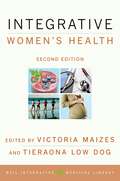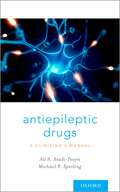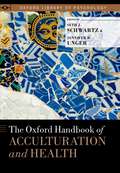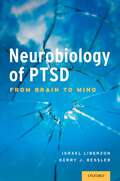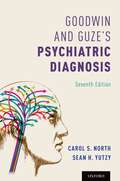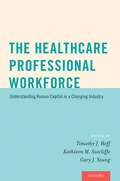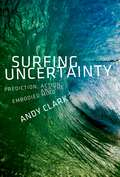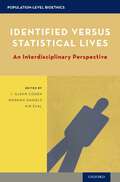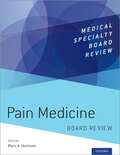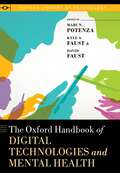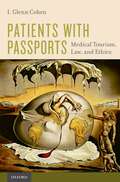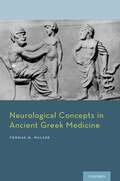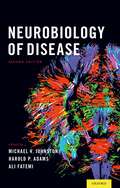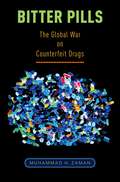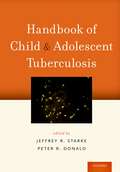- Table View
- List View
Integrative Women's Health (Weil Integrative Medicine Library)
Integrative Women's Health remains the only in-depth, broad-based reference on integrative women's health written for health professionals. It helps providers address not only women's reproductive health, but also conditions that manifest differently in women than in men, including cardiovascular disease, arthritis, HIV, depression, and cancer. The text presents the best evidence, in a clinically relevant manner, for the safe and effective use of herbs, vitamins, diet, and mind-body strategies alongside conventional medical treatments. As leading educators in integrative medicine, editors Dr. Maizes and Dr. Low Dog demonstrate how clinicians can implement their recommendations in practice, going beyond practical care to examine how to motivate patients, enhance a health history, and understand the spiritual dimensions of healing. In managing the patient, alternative therapies are never seen as substitutes for mainstream medical care, but always "integrated" into the overall regimen, and always subjected to the best available evidence. New to this second edition are chapters on environmental medicine and women's reproduction, thyroid health, and lesbian health.
Integrative Women's Health (Weil Integrative Medicine Library)
by Victoria Maizes and Tieraona Low DogIntegrative Women's Health remains the only in-depth, broad-based reference on integrative women's health written for health professionals. It helps providers address not only women's reproductive health, but also conditions that manifest differently in women than in men, including cardiovascular disease, arthritis, HIV, depression, and cancer. The text presents the best evidence, in a clinically relevant manner, for the safe and effective use of herbs, vitamins, diet, and mind-body strategies alongside conventional medical treatments. As leading educators in integrative medicine, editors Dr. Maizes and Dr. Low Dog demonstrate how clinicians can implement their recommendations in practice, going beyond practical care to examine how to motivate patients, enhance a health history, and understand the spiritual dimensions of healing. In managing the patient, alternative therapies are never seen as substitutes for mainstream medical care, but always "integrated" into the overall regimen, and always subjected to the best available evidence. New to this second edition are chapters on environmental medicine and women's reproduction, thyroid health, and lesbian health.
Antiepileptic Drugs: A Clinician's Manual
by Ali A. Asadi-Pooya Michael R SperlingThis concise handbook provides practical, up-to-date clinical guidance on effective selection, prescription, and usage of antiepileptic drugs for patients with epilepsy in various medical conditions and in a variety of clinical contexts. This text discusses choosing drugs when faced with various medical comorbidities; how to correctly prescribe, titrate, and taper drugs; how to monitor drug efficacy and side effects; how to diagnose and manage toxicity; how antiepileptic drugs interact with other medications; and comprehensive coverage of current treatment options. Key Feature of this Manual Include · A brief formal discussion of the basic pharmacology of each antiepileptic drug, with an emphasis on how to select and use anti-epileptic drugs in a variety of clinical contexts. · Discussions of antiepileptic drugs approved for epilepsy since 2009. · New research about already existing antiepileptic drugs. · References for further reading that are oriented toward utility in clinical practice. Antiepileptic Drugs: A Clinician's Manual fills an unmet need as a practical, patient-oriented reference and leads to improved patient care. Supported by practical, clinical knowledge and experience, this is the perfect guide for physicians looking to ensure safe practices in antiepileptic drug therapy.
Antiepileptic Drugs: A Clinician's Manual
by Ali A. Asadi-Pooya Michael R SperlingThis concise handbook provides practical, up-to-date clinical guidance on effective selection, prescription, and usage of antiepileptic drugs for patients with epilepsy in various medical conditions and in a variety of clinical contexts. This text discusses choosing drugs when faced with various medical comorbidities; how to correctly prescribe, titrate, and taper drugs; how to monitor drug efficacy and side effects; how to diagnose and manage toxicity; how antiepileptic drugs interact with other medications; and comprehensive coverage of current treatment options. Key Feature of this Manual Include · A brief formal discussion of the basic pharmacology of each antiepileptic drug, with an emphasis on how to select and use anti-epileptic drugs in a variety of clinical contexts. · Discussions of antiepileptic drugs approved for epilepsy since 2009. · New research about already existing antiepileptic drugs. · References for further reading that are oriented toward utility in clinical practice. Antiepileptic Drugs: A Clinician's Manual fills an unmet need as a practical, patient-oriented reference and leads to improved patient care. Supported by practical, clinical knowledge and experience, this is the perfect guide for physicians looking to ensure safe practices in antiepileptic drug therapy.
The Oxford Handbook of Acculturation and Health (Oxford Library of Psychology)
The Oxford Handbook of Acculturation and Health expertly brings together two very distinct, but complementary, streams of work and thought: theoretical and methodological work on acculturation, and the applied work linking acculturation to various health outcomes among international migrants and their families. In this important volume, the work of landmark acculturation theorists and methodologists come together to showcase applied epidemiologic and intervention work on the issues facing acculturation and public health today. Edited by Seth J. Schwartz and Jennifer B. Unger, this Handbook is divided into two important parts for readers. Part one features chapters that are dedicated to theoretical and methodological work on acculturation, including definitional issues, measurement issues, and procedures for studying acculturation across immigrant groups and national contexts. The second part focuses on the links between acculturation and various health outcomes, such as obesity, physical activity, drug and alcohol abuse, mental health, delinquency, and suicide. Notably, because a majority of the research on acculturation and health has been conducted on Hispanic immigration, this volume contextualizes that research and offers readers compelling insight for how to apply these principles to other immigrant groups in the United States and around the world.
Neurobiology of PTSD: From Brain to Mind
Neurobiology of PTSD outlines the basic neural mechanisms that mediate complex responses and adaptations to psychological trauma, describing how these biological processes are impaired in individuals with posttraumatic stress disorder (PTSD). Throughout three comprehensive sections, expert authors present detailed analysis of the neural circuitry of emotion, biological findings in post-traumatic stress disorder, and neuroscience informed treatment and prevention. This book is a foundational resource for psychiatrists, neuroscientists, psychologists, and allied health professionals.
Neurobiology of PTSD: From Brain to Mind
by Israel Liberzon and Kerry J. ResslerNeurobiology of PTSD outlines the basic neural mechanisms that mediate complex responses and adaptations to psychological trauma, describing how these biological processes are impaired in individuals with posttraumatic stress disorder (PTSD). Throughout three comprehensive sections, expert authors present detailed analysis of the neural circuitry of emotion, biological findings in post-traumatic stress disorder, and neuroscience informed treatment and prevention. This book is a foundational resource for psychiatrists, neuroscientists, psychologists, and allied health professionals.
Goodwin and Guze's Psychiatric Diagnosis 7th Edition
by Dr Carol North Dr Sean YutzyAcclaimed for its thorough yet concise overview of the natural history of psychiatric disorders, Goodwin & Guze's Psychiatric Diagnosis has been newly and extensively updated in this seventh edition. As in previous editions, each chapter systematically covers the definition, historical background, epidemiology, clinical picture, natural history, complications, family studies, differential diagnosis, and clinical management of each disorder. Terminology has been updated for consistency with changes made in DSM-5®. Recent epidemiologic and neurobiological findings are provided, including the long term course of mood disorders, genetics and neuroimaging of schizophrenia and mood and other disorders, cognitive changes in relation to depression and dementia, brain stimulation techniques, outcome studies of eating disorders, and epidemiology of substance use disorders.
Goodwin and Guze's Psychiatric Diagnosis 7th Edition
by Dr Carol North Dr Sean YutzyAcclaimed for its thorough yet concise overview of the natural history of psychiatric disorders, Goodwin & Guze's Psychiatric Diagnosis has been newly and extensively updated in this seventh edition. As in previous editions, each chapter systematically covers the definition, historical background, epidemiology, clinical picture, natural history, complications, family studies, differential diagnosis, and clinical management of each disorder. Terminology has been updated for consistency with changes made in DSM-5®. Recent epidemiologic and neurobiological findings are provided, including the long term course of mood disorders, genetics and neuroimaging of schizophrenia and mood and other disorders, cognitive changes in relation to depression and dementia, brain stimulation techniques, outcome studies of eating disorders, and epidemiology of substance use disorders.
The Healthcare Professional Workforce: Understanding Human Capital in a Changing Industry
by Timothy J. Hoff Kathleen M. Sutcliffe Gary J. YoungAs the U.S. healthcare industry undergoes sweeping changes to increase efficiency and reduce costs, the healthcare workforce is changing as well. In this new system of care, physicians work alongside health care teams, where nurses, pharmacists, and other professionals must collaborate to provide better, more affordable care to many more patients than ever before. The HEALTHCARE PROFESSIONAL WORKFORCE is the first book to codify the transformations underway across health professions in the U.S. and to situate these changes within a larger context for both healthcare and non-healthcare audiences. This volume provides an important guide to understanding how health professionals fit within the emerging model of healthcare, and serves as a vital resource for readers in health policy management, medicine, public health, and organizational studies. Comprising seven unique chapters alongside commentaries from heads of healthcare organizations and influential physicians, THE HEALTHCARE PROFESSIONAL WORKFORCE provides a theoretical and practical benchmark for understanding the next generation of human capital in one of society's most important labor sectors.
The Healthcare Professional Workforce: Understanding Human Capital in a Changing Industry
by Kathleen M. Sutcliffe Gary J. Young Timothy J. HoffAs the U.S. healthcare industry undergoes sweeping changes to increase efficiency and reduce costs, the healthcare workforce is changing as well. In this new system of care, physicians work alongside health care teams, where nurses, pharmacists, and other professionals must collaborate to provide better, more affordable care to many more patients than ever before. The HEALTHCARE PROFESSIONAL WORKFORCE is the first book to codify the transformations underway across health professions in the U.S. and to situate these changes within a larger context for both healthcare and non-healthcare audiences. This volume provides an important guide to understanding how health professionals fit within the emerging model of healthcare, and serves as a vital resource for readers in health policy management, medicine, public health, and organizational studies. Comprising seven unique chapters alongside commentaries from heads of healthcare organizations and influential physicians, THE HEALTHCARE PROFESSIONAL WORKFORCE provides a theoretical and practical benchmark for understanding the next generation of human capital in one of society's most important labor sectors.
Surfing Uncertainty: Prediction, Action, and the Embodied Mind
by Andy ClarkHow is it that thoroughly physical material beings such as ourselves can think, dream, feel, create and understand ideas, theories and concepts? How does mere matter give rise to all these non-material mental states, including consciousness itself? An answer to this central question of our existence is emerging at the busy intersection of neuroscience, psychology, artificial intelligence, and robotics. In this groundbreaking work, philosopher and cognitive scientist Andy Clark explores exciting new theories from these fields that reveal minds like ours to be prediction machines - devices that have evolved to anticipate the incoming streams of sensory stimulation before they arrive. These predictions then initiate actions that structure our worlds and alter the very things we need to engage and predict. Clark takes us on a journey in discovering the circular causal flows and the self-structuring of the environment that define "the predictive brain." What emerges is a bold, new, cutting-edge vision that reveals the brain as our driving force in the daily surf through the waves of sensory stimulation.
Surfing Uncertainty: Prediction, Action, and the Embodied Mind
by Andy ClarkHow is it that thoroughly physical material beings such as ourselves can think, dream, feel, create and understand ideas, theories and concepts? How does mere matter give rise to all these non-material mental states, including consciousness itself? An answer to this central question of our existence is emerging at the busy intersection of neuroscience, psychology, artificial intelligence, and robotics. In this groundbreaking work, philosopher and cognitive scientist Andy Clark explores exciting new theories from these fields that reveal minds like ours to be prediction machines - devices that have evolved to anticipate the incoming streams of sensory stimulation before they arrive. These predictions then initiate actions that structure our worlds and alter the very things we need to engage and predict. Clark takes us on a journey in discovering the circular causal flows and the self-structuring of the environment that define "the predictive brain." What emerges is a bold, new, cutting-edge vision that reveals the brain as our driving force in the daily surf through the waves of sensory stimulation.
Identified versus Statistical Lives: An Interdisciplinary Perspective (Population-Level Bioethics)
by I. Glenn Cohen Norman Daniels Nir EyalThe identified lives effect describes the fact that people demonstrate a stronger inclination to assist persons and groups identified as at high risk of great harm than those who will or already suffer similar harm, but endure unidentified. As a result of this effect, we allocate resources reactively rather than proactively, prioritizing treatment over prevention. For example, during the August 2010 gold mine cave-in in Chile, where ten to twenty million dollars was spent by the Chilean government to rescue the 33 miners trapped underground. Rather than address the many, more cost effective mine safety measures that should have been implemented, the Chilean government and international donors concentrated efforts in large-scale missions that concerned only the specific group. Such bias as illustrated through this incident raises practical and ethical questions that extend to almost every aspect of human life and politics. What can social and cognitive sciences teach us about the origin and triggers of the effect? Philosophically and ethically, is the effect a "bias" to be eliminated or is it morally justified? What implications does the effect have for health care, law, the environment and other practice domains? This volume is the first to take an interdisciplinary approach toward answering this issue of identified versus statistical lives by considering a variety of perspectives from psychology, public health, law, ethics, and public policy.
Identified versus Statistical Lives: An Interdisciplinary Perspective (Population-Level Bioethics)
by I. Glenn Cohen, Norman Daniels and Nir EyalThe identified lives effect describes the fact that people demonstrate a stronger inclination to assist persons and groups identified as at high risk of great harm than those who will or already suffer similar harm, but endure unidentified. As a result of this effect, we allocate resources reactively rather than proactively, prioritizing treatment over prevention. For example, during the August 2010 gold mine cave-in in Chile, where ten to twenty million dollars was spent by the Chilean government to rescue the 33 miners trapped underground. Rather than address the many, more cost effective mine safety measures that should have been implemented, the Chilean government and international donors concentrated efforts in large-scale missions that concerned only the specific group. Such bias as illustrated through this incident raises practical and ethical questions that extend to almost every aspect of human life and politics. What can social and cognitive sciences teach us about the origin and triggers of the effect? Philosophically and ethically, is the effect a "bias" to be eliminated or is it morally justified? What implications does the effect have for health care, law, the environment and other practice domains? This volume is the first to take an interdisciplinary approach toward answering this issue of identified versus statistical lives by considering a variety of perspectives from psychology, public health, law, ethics, and public policy.
Pain Medicine Board Review (Medical Specialty Board Review)
Pain Medicine Board Review is a comprehensive guide for preparing for the American Board of Medical Specialties (ABMS) certification or recertification in Pain Medicine, and for residents preparing for in-training examinations in Pain Medicine. The text is organized into 28 chapters covering topics such as Anatomy, Physiology of Pain, Pharmacology, Diagnosis of Pain, and various pain syndromes. Each section includes questions, answers, and detailed explanations with highlighted key points, and concise further reading lists. Questions follow the ABMS style, and the explications of answers carefully address all points in the ABMS content outline for Pain Medicine. A section on imaging includes high quality magnetic resonance images, ultrasound images, fluoroscopic images and other images that will enable the examination candidate to answer questions that determine knowledge of pathological states as compared to normal and complications of treatments.
Pain Medicine Board Review (Medical Specialty Board Review)
by Marc A. HuntoonPain Medicine Board Review is a comprehensive guide for preparing for the American Board of Medical Specialties (ABMS) certification or recertification in Pain Medicine, and for residents preparing for in-training examinations in Pain Medicine. The text is organized into 28 chapters covering topics such as Anatomy, Physiology of Pain, Pharmacology, Diagnosis of Pain, and various pain syndromes. Each section includes questions, answers, and detailed explanations with highlighted key points, and concise further reading lists. Questions follow the ABMS style, and the explications of answers carefully address all points in the ABMS content outline for Pain Medicine. A section on imaging includes high quality magnetic resonance images, ultrasound images, fluoroscopic images and other images that will enable the examination candidate to answer questions that determine knowledge of pathological states as compared to normal and complications of treatments.
The Oxford Handbook of Digital Technologies and Mental Health (Oxford Library of Psychology)
Digital technology use, whether on smartphones, tablets, laptops, or other devices, is prevalent across cultures. Certain types and patterns of digital technology use have been associated with mental health concerns, but these technologies also have the potential to improve mental health through the gathering of information, by targeting interventions, and through delivery of care to remote areas. The Oxford Handbook of Digital Technologies and Mental Health provides a comprehensive and authoritative review of the relationships between mental health and digital technology use, including how such technologies may be harnessed to improve mental health. Understanding the positive and negative correlates of the use of digital technologies has significant personal and public health implications, and as such this volume explores in unparalleled depth the historical and cultural contexts in which technology use has evolved; conceptual issues surrounding digital technologies; potential positive and potential negative impacts of such use; treatment, assessment, and legal considerations around digital technologies and mental health; technology use in specific populations; the use of digital technologies to treat psychosocial disorders; and the treatment of problematic internet use and gaming. With chapters contributed by leading scientists from around the world, this Handbook will be of interest to those in medical and university settings, students and clinicians, and policymakers.
Patients with Passports: Medical Tourism, Law, and Ethics
by I. Glenn CohenCan your employer require you to travel to India for a hip replacement as a condition of insurance coverage? If injury results, can you sue the doctor, hospital or insurer for medical malpractice in the country where you live? Can a country prohibit its citizens from helping a relative travel to Switzerland for assisted suicide? What about travel for abortion? In Patients with Passports, I. Glenn Cohen tackles these important questions, and provides the first comprehensive legal and ethical analysis of medical tourism. Medical tourism is a growing multi-billion dollar industry involving millions of patients who travel abroad each year to get health care. Some seek legitimate services like hip replacements and travel to avoid queues, save money, or because their insurer has given them an incentive to do so. Others seek to circumvent prohibitions on accessing services at home and go abroad to receive abortions, assisted suicide, commercial surrogacy, or experimental stem cell treatments. In this book, author I. Glenn Cohen focuses on patients traveling for cardiac bypass and other legal services to places like India, Thailand, and Mexico, and analyzes issues of quality of care, disease transmission, liability, private and public health insurance, and the effects of this trade on foreign health care systems. He goes on to examine medical tourism for services illegal in the patient's home country, such as organ purchase, abortion, assisted suicide, fertility services, and experimental stem cell treatments. Here, Cohen examines issues such as extraterritorial criminalization, exploitation, immigration, and the protection of children. Through compelling narratives, expert data, and industry explanations Patients with Passports enables the reader to connect with the most prevalent legal and ethical issues facing medical tourism today.
Neurological Concepts in Ancient Greek Medicine
by Thomas M Walshe, IIINeurological history claims its earliest origins in the 17th century with Thomas Willis's publication of Anatomy of the Brain, coming fully into fruition as a field in the late 1850s as medical technology and advancements allowed for in depth study of the brain. However, many of the foundations in neurology can find the seed of their beginning to a time much earlier than that, to ancient Greece in fact. Neurological Concepts in Ancient Greek Medicine is a collection of essays exploring neurological ideas between the Archaic and Hellenistic eras. These essays also provide historic, intellectual, and cultural context to ancient Greek medical practice and emphasizing the interest in the brain of the early physicians. This book describes source material that is over 2,500 years old and reveals the observational skills of ancient physicians. It provides complete translations of two historic Hippocratic texts: On the Sacred Diseases and On the Wounds of the Head. The book also discusses the Hippocratic Oath and the modern applications of its meaning. Dr. Walshe connects this ancient history, usually buried in medical histories, and shows the ancient Greek notions that are the precursors of our understanding of the brain and nervous system.
Neurological Concepts in Ancient Greek Medicine
by Thomas M Walshe, IIINeurological history claims its earliest origins in the 17th century with Thomas Willis's publication of Anatomy of the Brain, coming fully into fruition as a field in the late 1850s as medical technology and advancements allowed for in depth study of the brain. However, many of the foundations in neurology can find the seed of their beginning to a time much earlier than that, to ancient Greece in fact. Neurological Concepts in Ancient Greek Medicine is a collection of essays exploring neurological ideas between the Archaic and Hellenistic eras. These essays also provide historic, intellectual, and cultural context to ancient Greek medical practice and emphasizing the interest in the brain of the early physicians. This book describes source material that is over 2,500 years old and reveals the observational skills of ancient physicians. It provides complete translations of two historic Hippocratic texts: On the Sacred Diseases and On the Wounds of the Head. The book also discusses the Hippocratic Oath and the modern applications of its meaning. Dr. Walshe connects this ancient history, usually buried in medical histories, and shows the ancient Greek notions that are the precursors of our understanding of the brain and nervous system.
Neurobiology of Disease
by Michael V. Johnston, Harold P. Adams and Ali FatemiThe second edition of Neurobiology of Disease includes nearly 200 articles surveying all major disorders of the nervous system in both adults and children, focusing on relevant diagnosis and treatments from the perspective of cutting edge clinical and basic neurobiological research. Akin to an encyclopedia of every neurologic disorder, this comprehensive work is ideal for graduate and medical school students, residents, and candidates preparing for their board certification examinations. Each chapter is illustrated with detailed figures, supplemented with descriptive and diagnostic tables, and thoroughly referenced for further investigations. The book's editors, Michael V. Johnston, Harold P. Adams Jr., and Ali Fatemi bring their unique expertise in clinical and research neurology to the overall scope of this work. To further enhance the scope and quality of this new edition, the following Section Editors provided oversight of their respective sections: · Movement Disorders-Joel Perlmutter, Washington University · Dementias-David Knopman, Mayo Clinic · Motorneuron Diseases-Merit Cudkowicz, Massachusetts General Hospital · Paroxysmal Disorders-Solomon Moshe, Albert Einstein College of Medicine · Pediatric Neurology and Developmental Disorders-Tanjala Gipson and Deepa Menon, Kennedy Krieger Institute and Johns Hopkins University · Neuroimmunological Diseases-Carlos Pardo-Villamizar, Johns Hopkins University · Cerebrovascular Diseases-Harold P. Adams Jr., University of Iowa · Peripheral and Autonomic Nervous System Disorders and Pain-Nicholas Maragakis, Johns Hopkins University · Neoplastic and Paraneoplastic Diseases-Lisa DeAngelis, Memorial Sloan-Kettering Cancer Center · Infectious Diseases of the Nervous System-Karen L. Roos, Indiana University · Sleep Disturbances-Mark Dyken, University of Iowa · Substance Abuse and Toxicology Disorders-Barry E. Kosofsky, Weill-Cornell University Medical Center · Neurologic Manifestations of Medical Disorders-John C. Probasco, Johns Hopkins University
Bitter Pills: The Global War on Counterfeit Drugs
by Muhammad H. ZamanLong the scourge of developing countries, fake pills are now increasingly common in the United States. The explosion of Internet commerce, coupled with globalization and increased pharmaceutical use has led to an unprecedented vulnerability in the U.S. drug supply. Today, an estimated 80% of our drugs are manufactured overseas, mostly in India and China. Every link along this supply chain offers an opportunity for counterfeiters, and increasingly, they are breaking in. In 2008, fake doses of the blood thinner Heparin killed 81 people worldwide and resulted in hundreds of severe allergic reactions in the United States. In 2012, a counterfeit version of the cancer drug Avastin, containing no active chemotherapy ingredient, was widely distributed in the United States. In early 2013, a drug trafficker named Francis Ortiz Gonzalez was sentenced to prison for distributing an assortment of counterfeit, Chinese-made pharmaceuticals across America. By the time he was arrested, he had already sold over 140,000 fake pills to customers. Even when the U.S. system works, as it mostly does, consumers are increasingly circumventing the safeguards. Skyrocketing health care costs in the U.S. have forced more Americans to become "medical tourists" seeking drugs, life-saving treatments and transplants abroad, sometimes in countries with rampant counterfeit drug problems and no FDA. Bitter Pills will heighten the public's awareness about counterfeit drugs, critically examine possible solutions, and help people protect themselves. Author Muhammad H. Zaman pays special attention to the science and engineering behind both counterfeit and legitimate drugs, and the role of a "technological fix" for the fake drug problem. Increasingly, fake drugs affect us all.
Bitter Pills: The Global War on Counterfeit Drugs
by Muhammad H. ZamanLong the scourge of developing countries, fake pills are now increasingly common in the United States. The explosion of Internet commerce, coupled with globalization and increased pharmaceutical use has led to an unprecedented vulnerability in the U.S. drug supply. Today, an estimated 80% of our drugs are manufactured overseas, mostly in India and China. Every link along this supply chain offers an opportunity for counterfeiters, and increasingly, they are breaking in. In 2008, fake doses of the blood thinner Heparin killed 81 people worldwide and resulted in hundreds of severe allergic reactions in the United States. In 2012, a counterfeit version of the cancer drug Avastin, containing no active chemotherapy ingredient, was widely distributed in the United States. In early 2013, a drug trafficker named Francis Ortiz Gonzalez was sentenced to prison for distributing an assortment of counterfeit, Chinese-made pharmaceuticals across America. By the time he was arrested, he had already sold over 140,000 fake pills to customers. Even when the U.S. system works, as it mostly does, consumers are increasingly circumventing the safeguards. Skyrocketing health care costs in the U.S. have forced more Americans to become "medical tourists" seeking drugs, life-saving treatments and transplants abroad, sometimes in countries with rampant counterfeit drug problems and no FDA. Bitter Pills will heighten the public's awareness about counterfeit drugs, critically examine possible solutions, and help people protect themselves. Author Muhammad H. Zaman pays special attention to the science and engineering behind both counterfeit and legitimate drugs, and the role of a "technological fix" for the fake drug problem. Increasingly, fake drugs affect us all.
Handbook of Child and Adolescent Tuberculosis
Tuberculosis remains one of the most prevalent, deadly, and underdiagnosed infectious diseases in the world. In children, this burden is doubly problematic because of the disease's unique clinical characteristics and its need for special public health and diagnostic techniques. After decades of relative inattention to these factors, childhood tuberculosis has now grown into an important area of competency for child health programs in low-burden areas, including the United States. The Handbook of Child and Adolescent Tuberculosis is a state of the art clinical reference written and edited by the world's leading experts in childhood tuberculosis. It offers clinicians in any geography or setting practical, evidence-based advice on all aspects of the disease, including its natural history, epidemiology, presentation, treatment, and prevention -- all in a format that synthesizes literature with the clinical experience of the leading authorities in this challenging field. As the need for childhood tuberculosis services in child health programs grows, this handbook provides a new benchmark for practitioners and trainees in pediatrics, infectious disease, pulmonary medicine, and public health to better understand this persisting and difficult disease.
